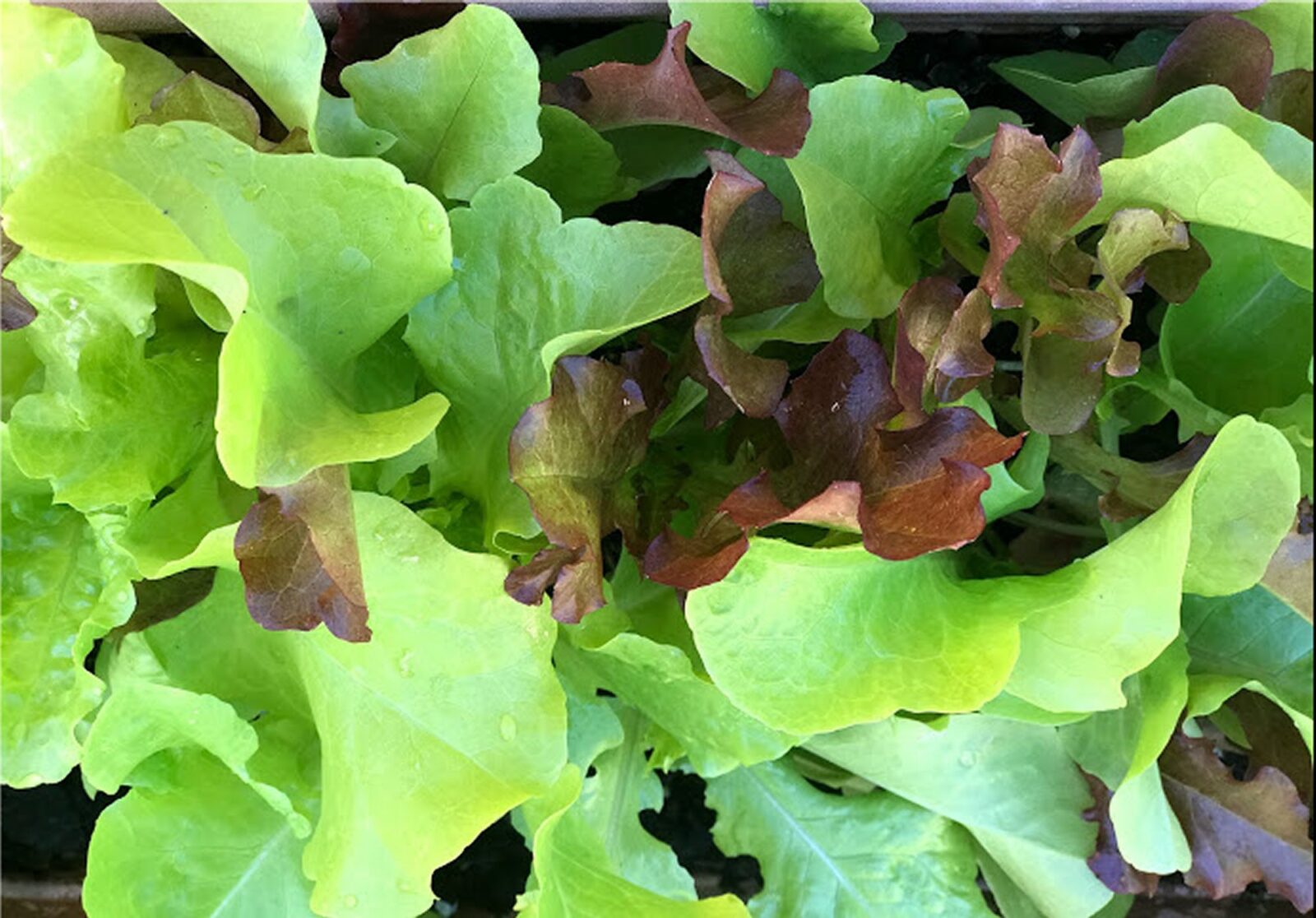As a gardener in Florida, I’ve learned that our winters provide a unique setting for growing a variety of plants. You really can grow lettuce in Florida, as long as you grow it in winter.
Lettuce loves cool weather and will bolt and go to seed quickly in the heat. Since it starts getting really hot in May, that means the window to grow lettuce in Florida remains between September to April. Even then, there are a few tricks you’ll need to know to be successful.
Understanding Winter Climate in Florida
When we talk about gardening in Florida during the winter, it’s important to first understand the unique climatic conditions of the region. The Gulf States, from Florida to Eastern Texas, sit firmly in Zones 9 through 11. They have mild winters and enjoy lower humidity than the rest of the year.
Despite the milder temperatures, winter also brings shorter daylight hours. Lettuce generally requires around 6 hours of sunlight per day. In winter, the sun is lower in the sky, and the days are shorter, so selecting a planting site with maximum light exposure is crucial.
Winters in Florida are drier and less humid than the summer months, which is beneficial for lettuce, as high humidity can encourage fungal diseases. However, this also means you need to be more vigilant about watering.
Choosing the Best Lettuce Varieties to Grow in Florida
A big part of successfully growing lettuce in Florida is choosing the right varieties. You may have heard that it’s the one time of year you can grow crispheads, but my experience in Zone 10A says, “Don’t bother.”
Lettuces can be broadly categorized into four types: crisphead, butterhead, romaine, and loose leaf. In Florida, crisphead lettuces like iceberg generally don’t perform as well due to their preference for cooler, more consistent temperatures.
Yes, it may get below freezing, and yes, it’s generally cooler in the winter. But you see, when it’s not freezing, the temperature is still likely to jump above 80°F.
Instead, focus on butterhead, romaine, and loose-leaf varieties, which are more adaptable to those surprise heatwaves.
Heading Lettuce Varieties to Grow in Florida
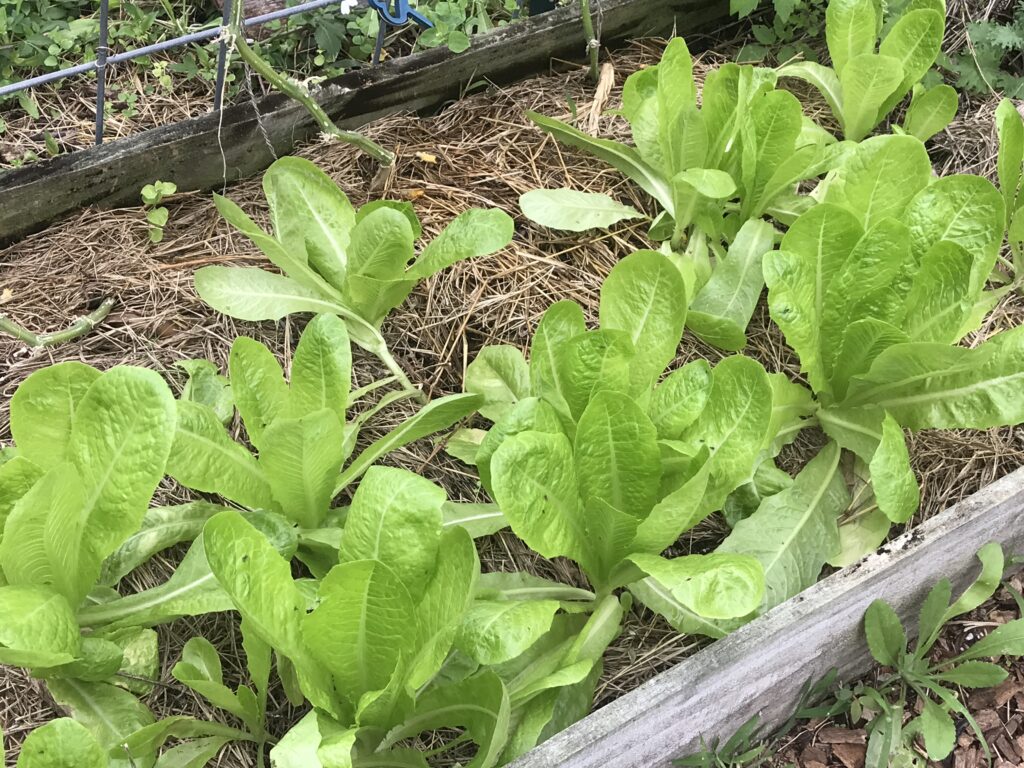
Some “heading” lettuce varieties to look for:
Jericho Romaine
A robust variety known for its heat tolerance. Jericho produces dense, crisp leaves and is ideal for salads and wraps. This variety, developed in Israel, is very heat-tolerant, and I’ve even been able to keep it growing through to June.
You can find Jericho Romaine lettuce seeds in my shop.

Manoa
Similar to butterhead lettuce, Manoa is a heat-tolerant variety with a soft texture and sweet flavor, perfect for delicate salads. I’ve grown this one for several years but am still mastering the optimum germination temperatures.
Red Cross
This butterhead variety has beautiful, red-tinted leaves and a tender, mild flavor. It adds a pop of color to any salad. I haven’t tried this one yet, but the San Deigo Summer Lettuce program recommends it.
Nevada
Boasting good heat resistance, Nevada has crisp, green leaves that form a loose head. It’s known for its durability in fluctuating temperatures.
Paradai
A romaine type, Paradai is prized for its crunchy texture and resistance to bolting in warmer weather.
Parris Island
A classic romaine with long, dark green leaves, this variety is valued for its crisp texture and exceptional flavor.
Little Gem
A smaller romaine type, Little Gem is ideal for limited space. It has a sweet flavor and a compact, crunchy head.
Anuenue
Another butterhead type, Anuenue is known for its heat tolerance and resistance to bolting, producing soft, tender leaves.
Loose Leaf Lettuces to Grow in Florida
Loose leaf lettuce varieties are truly the easiest when you’re trying to grow lettuce in Florida. Best of all, you can harvest individual leaves as they mature, ensuring several harvests throughout fall and winter.
Mesclun Mix
Mesclun mix is generally a dealer’s choice of tender leaf lettuces and brassicas that provide a distinct and delicious salad blend.
You can find Mesclun Mix lettuce seed mix in my shop.
Black-Seeded Simpson
One of the most popular loose-leaf varieties, it produces light green, curly leaves with a delicate flavor. It’s a fast grower and very resilient. I’ve grown this one for years, and it’s recommended by the IFAS Florida Ag page.
Red Sails
This variety features attractive, ruffled, red-tinted leaves. It’s not only heat tolerant but also rich in nutrients and flavor.
Salad Bowl
As a cut-and-come-again variety, Salad Bowl produces loose, green, crinkly leaves that are both tender and flavorful. I’ve grown several “salad bowl” varieties in containers with much success, harvesting from October through April on a “cut and come again” basis.
Bronze Oakleaf
Known for its bronze-red leaves that resemble oak leaves, this variety offers a sweet taste and a pleasing texture. Most of the “oak leaf” type leaf lettuces will grow well in Florida winters.
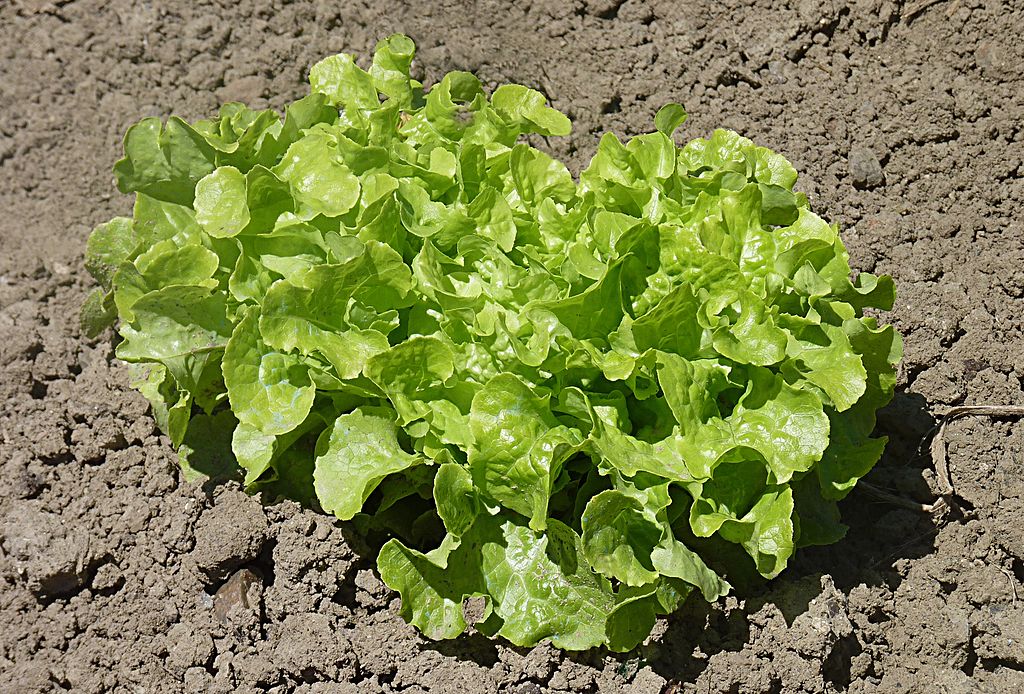
Starting Your Lettuce Seeds
Starting your lettuce seeds in cell blocks or seed trays allows for better control over the growing conditions. Even heat-tolerant lettuce varieties struggle to germinate at temperatures above 80°F, and my struggles with the delicate and sweet Manoa lettuce is a testament to that.
Temperature Control
It’s easier to manage the temperature for seed germination in controlled environments. Lettuce seeds prefer cooler temperatures for germination and can struggle in the heat, making indoor starting ideal.
Longer Harvest
Starting seeds in trays can lead to an earlier and longer harvest seaon by allowing you to begin the growing process indoors while waiting for outdoor conditions to become suitable. That way, you can sow lettuce seeds indoors during the boiling heat of August or the frigid nights of December.
Flexibility
Trays allow you to strategically plan your garden layout and maximize yield by choosing where and when to transplant seedlings. I frequently dot my winter garden beds with Jericho Romaine heads whenever and wherever space becomes available.
Starting Your Lettuce in Cell Trays
Here’s a detailed guide on how to successfully start lettuce seeds in cell blocks or trays:
You’ll need clean cell trays or small soil blocks. Use a light seed-starting mix that won’t offer too much resistance to delicate roots.
- Make soil blocks or fill cell trays with your well-moistened seed mix.
- Plant three seeds per block or 4 to 5 if using older seeds.
- Cover lightly with soil and press down to increase seeds’ contact with soil.
- Use a mister to keep soil moist or bottom-water as required.
- Maintain a soil temperature of around 60-70°F.
Seedlings will need plenty of light once they germinate. You can grow them outside in Florida if temperatures are on-point. If it gets above 80°F or below 50°F, consider moving them indoors near a window or into a greenhouse.
If necessary, you can purchase inexpensive grow lights. The new LED technologies for grow lights provide full spectrum at low initial cost, reduced electrical usage, and thankfully – no added heat load to your home.
Germination and Growth
Lettuce seeds typically germinate within 7-10 days. Monitor the moisture level and temperature regularly.
Check the water daily. If seedlings become leggy (tall and thin), they need more light.
Thin back to one seedling per cell. You can try to separate them and plant them individually, but I have found they’re really just too delicate. Best to thin the herd and let the strongest one take over.
Gradually acclimate the seedlings to outdoor conditions over a week. Start by placing them outside in a shady area for part of the day and then progressively increase their time outdoors.
Preparing the Garden
Florida soil is known for being sandy, which is nice for working but devoid of organic matter and nutrients. I try to layer some compost down on any planting bed twice a year to improve the soil.
Once weeds have been removed, you can transplant the seedlings into your prepared garden bed. Provide about 8” to 10” for each plant in order to provide enough space to grow.
Transplanting
Transplant lettuce seedlings to the garden after the last heat wave of September or anytime throughout winter until April.
Late December through late January has the highest chance of frost, so you may choose to avoid those weeks for planting out.
Ongoing Care to Grow Lettuce in Florida
Because Florida EATS compost, you may want to side-dress your lettuce with compost or composted manure. A dose of fish emulsion usually provides a boost in the middle of the growing season, as well.
The winter months also offer less rainfall. To add insult to injury, it’s also incredibly windy. That means you’ll need to stay on top of irrigation to keep your lettuce plants thriving.
Lettuce can handle light frosts, but temperatures below freezing (32°F or 0°C) for long periods can damage the plants.
In Florida, freezes are rare, but it’s good to be prepared. Use row covers or even old sheets or beach towels to cover them during a freeze warning.
Growing Lettuce in Florida in Containers
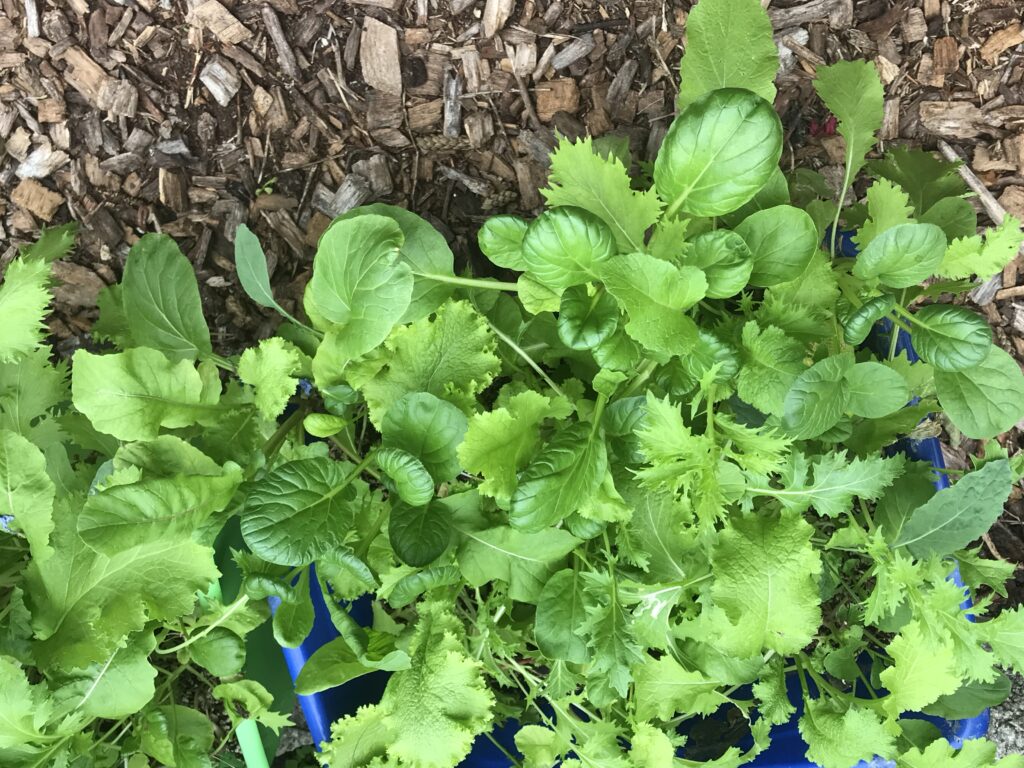
That sounds like a lot of work to me, and for the most part, I only grow a little heading lettuce here and there in the garden. I may stick some Jericho seedlings in between other plants. Once my fall determinate tomatoes crop, I sometimes plant some lettuce under them.
For a regular supply of homegrown lettuce, though, I use containers instead.
I’ve found that shallow planters (pick them up cheap at the dollar store) with some drainage holes added, make excellent garden planters for cut and come again leaf lettuce.
This offers several advantages:
Temperature Control
I can start seeds in August and keep them indoors or in the shade, moving the containers easily to where they’re needed.
Likewise, as the temperatures cool, I can move the planters into a sunnier spot in the garden.
Succession Timing
After several years of planting this way, I know how many containers to plant per week for my family. I plant five large trays (or seven smaller ones) per week for four weeks.
As the first ones mature, I sow more in succession. This means that I have a regular supply of fresh, young, tender lettuce at any given time.
I don’t have to deal with lettuce growing, maturing, and becoming bitter because we can’t eat it fast enough.
Not that the chickens aren’t willing to get rid of it for me.
Cheaper, Easier, and Less Work
Since I’m growing in containers, I only have to ensure moisture and fertility for a limited amount of soil. Lettuce is a shallow-rooted planted. It’s a hungry plant, because it doesn’t have deep roots. It needs all it’s moisture and nutrition close to the surface.
It’s a heck of a lot cheaper to feed and water a bunch of shallow containers than vast swathes of garden soil. Besides, growing my quick-maturing lettuce in containers means more room in the garden for broccoli and cabbages.
Growing Lettuce in Containers
Find shallow garden planters or other containers to use. You can use transparent bins (like on Roots and Refuge Farm) or cheap garden planters from the dollar store.
Last year, I found a clearance sale on some cubby bins from Dollar General and drilled some holes in the bottom.
Planting
Fill the container with 4” to 6” of good, rich potting soil.
Add some slow-release organic fertilizer to save time and trouble. Most are good for three to four months of growing.
Lightly scatter your loose-leaf lettuce seeds on top and then sprinkle the top with a light layer of more soil.
Press down with your hands to increase seed contact with the soil.
Mist well and place in a temperate spot to germinate.
Harvesting
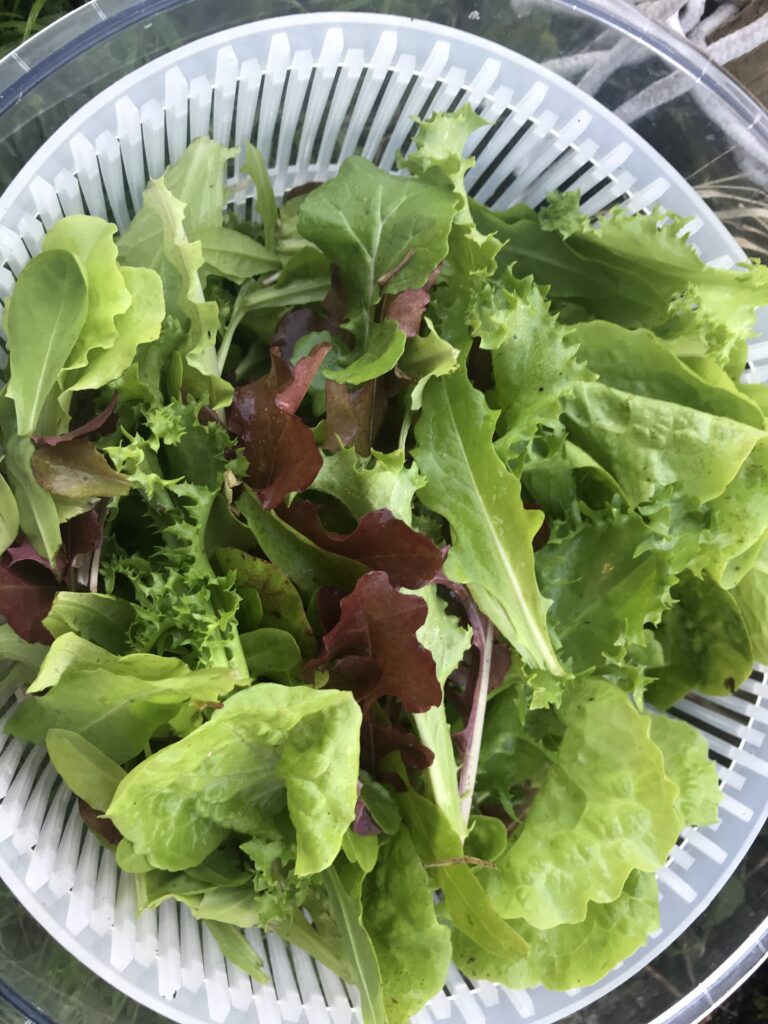
As plants germinate and mature, harvest individual leaves for eating by pinching them near the ground.
Allow smaller leaves to grow and harvest later.
Planting and harvesting in succession will result in a season-long harvest of fresh salad greens.
Grow Lettuce in Florida This Winter
Winter isn’t just the best time to grow lettuce in Florida, it may actually be the ONLY time you can grow it with any success in our hot, humid climate.
Whether you grow in the ground or in containers, adding fresh, homegrown salads to your winter menu is sure to elevate your cooking and improve nutrition for you and your family.
Besides, they taste amazing.
Last update on 2024-10-22 / Affiliate links / Images from Amazon Product Advertising API
This product presentation was made with AAWP plugin.
